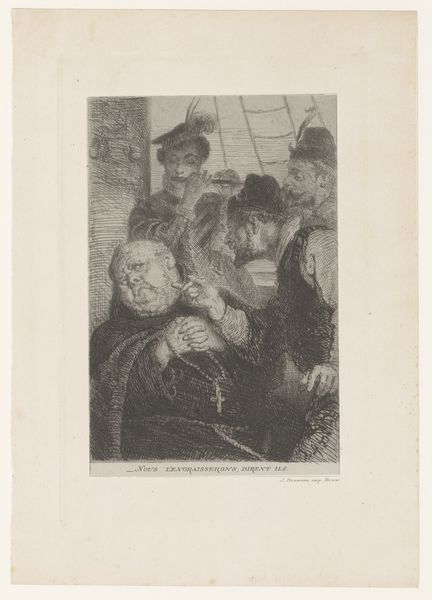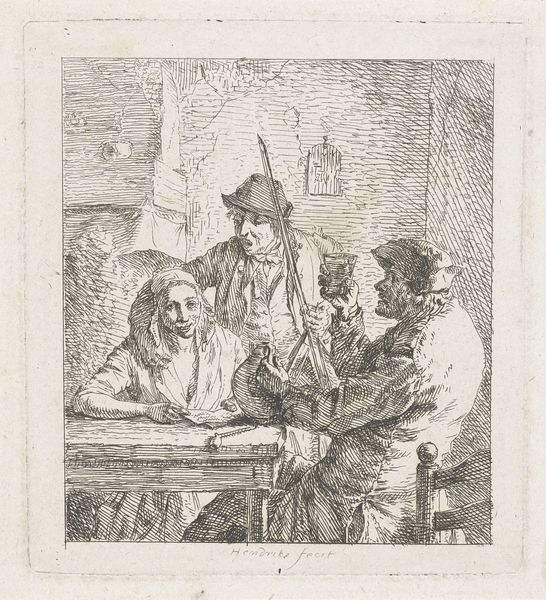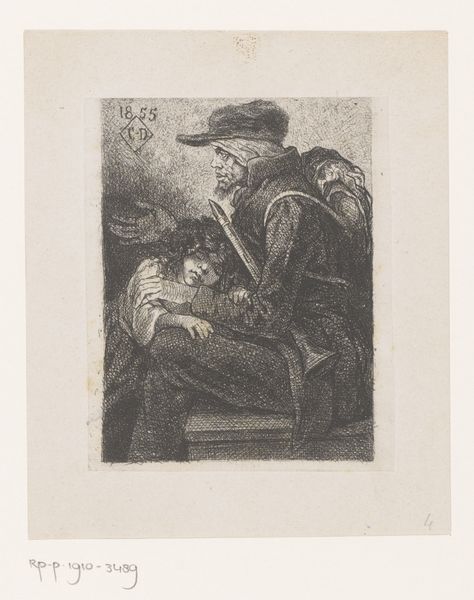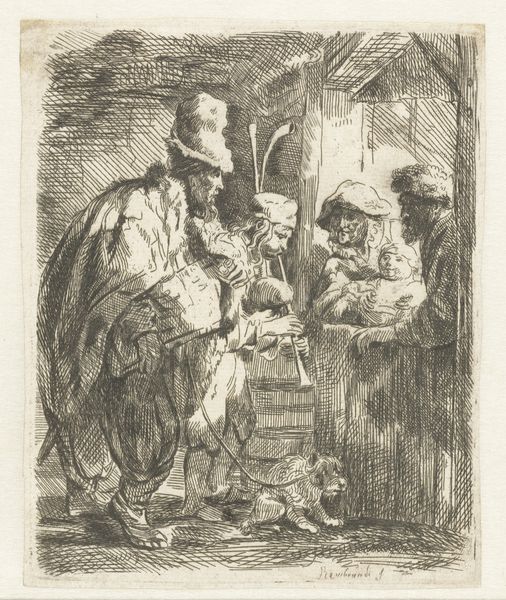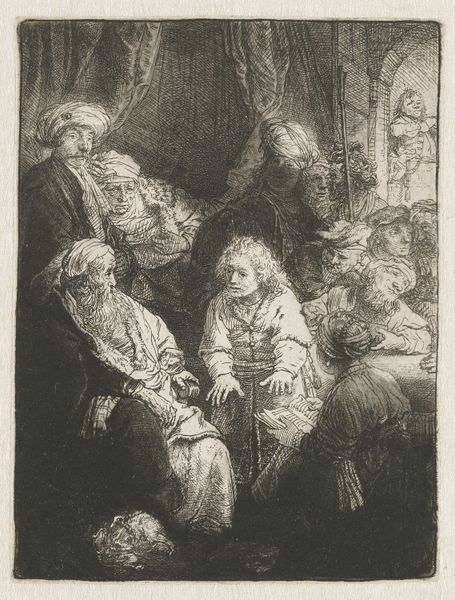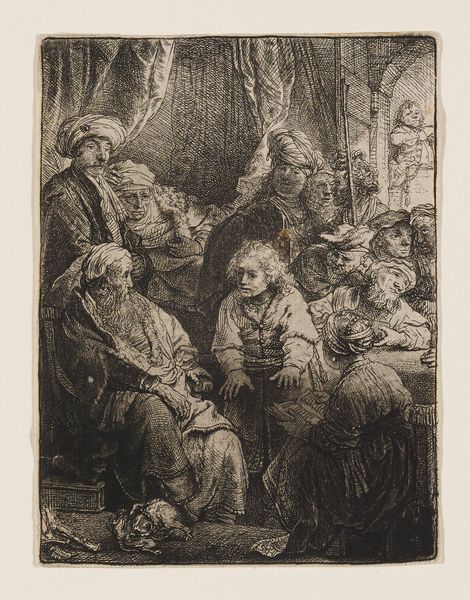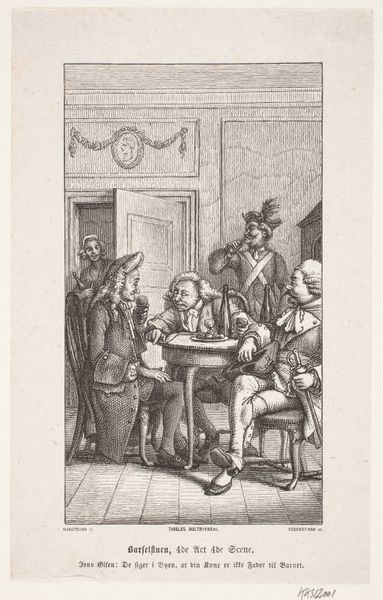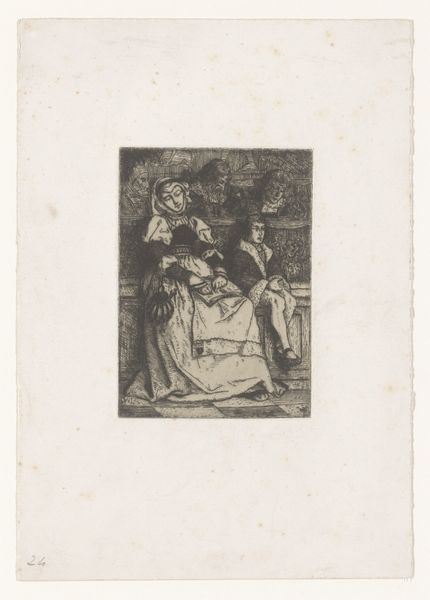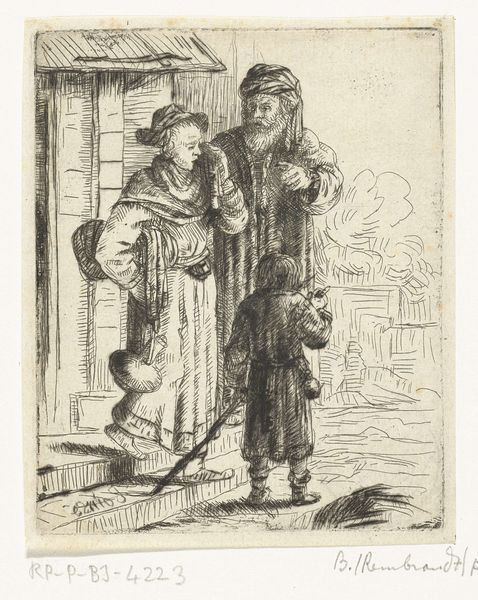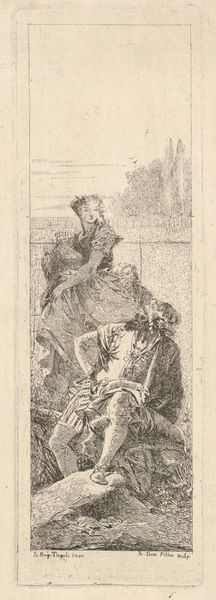
Drie mannen staan op een schip rondom een monnik met rozenkrans in zijn handen 1868
0:00
0:00
drawing, print, etching
#
portrait
#
drawing
# print
#
etching
#
old engraving style
#
genre-painting
#
realism
Dimensions: height 238 mm, width 157 mm
Copyright: Rijks Museum: Open Domain
Editor: This etching by Adolphe Alexandre Dillens from 1868, titled "Three men on a ship around a monk with a rosary in his hands," feels surprisingly intimate. There's this casual crowding around the central figure that draws me in. How do you interpret this work, seeing as it presents a slice of life seemingly frozen in time? Curator: The frozen moment is key. The grouping around the monk speaks volumes. Look at the details—the monk’s rosary juxtaposed with the flute player in the background. Are we looking at a commentary on earthly versus spiritual pursuits? The ship itself is a powerful symbol. Editor: In what way is the ship symbolic here? Curator: The ship, throughout history, has been a vessel of transition, a space of in-between. Dillens captures the push and pull of secular versus sacred right in that shared space. The men, seemingly indifferent or amused by the monk, reflect the complex relationships society has always had with religious figures. Editor: That's fascinating! So the image works as a snapshot reflecting society's attitudes? Curator: Precisely. Etchings like this often served to hold a mirror to cultural norms. This print would likely circulate widely, planting this meditation in diverse viewing contexts, both reaffirming or challenging their social mores. Even the ‘genre painting’ aspect highlights its concern with capturing everyday life. Editor: I hadn't considered that before. The way Dillens uses everyday life to talk about broader themes of faith and society...it is a powerful approach. Curator: Indeed. The enduring power lies in that seemingly casual gathering of figures holding weighty symbolic implications. What started as a curious slice-of-life unveils itself to reflect deeper truths about humanity itself, when the symbols it presents become apparent. Editor: I feel like I’ve really begun to understand not just *what* is depicted, but *why* such subjects were captured and preserved in artworks from this period. Curator: Exactly! Recognizing the loaded meaning imbues them with power across centuries.
Comments
No comments
Be the first to comment and join the conversation on the ultimate creative platform.
